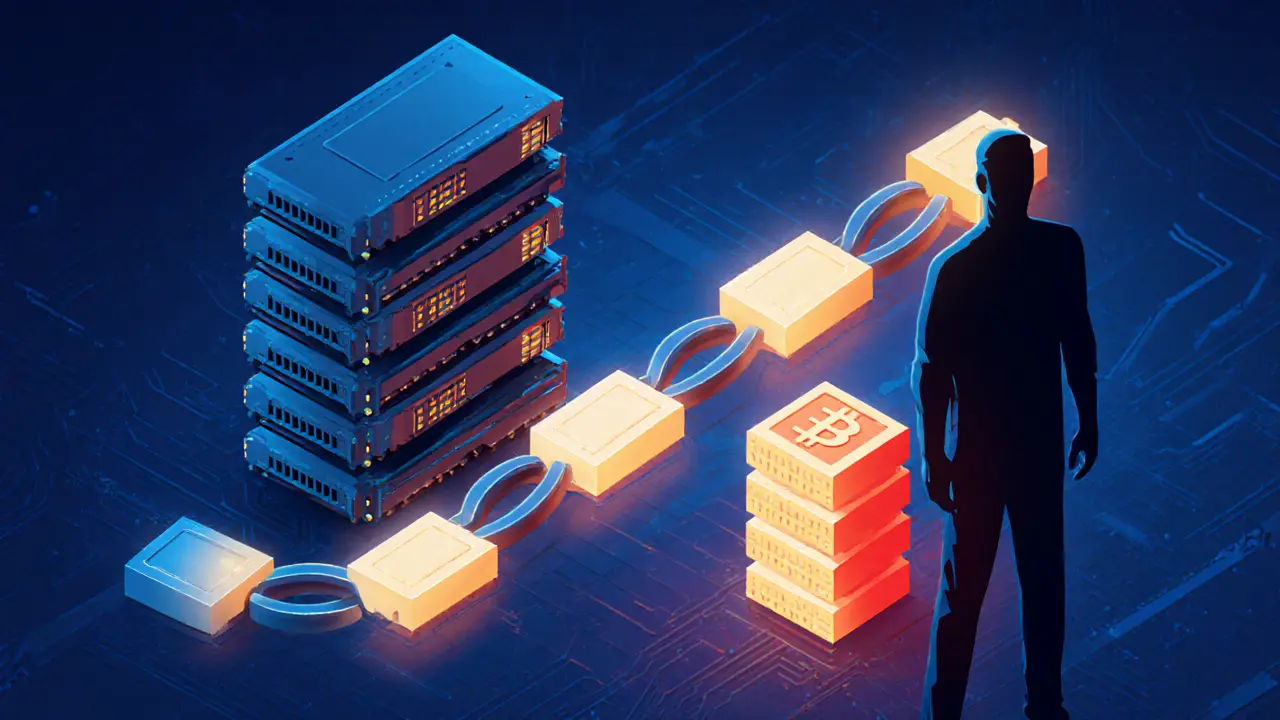Proof of Work Explained: How It Powers Crypto Networks
When working with Proof of Work, a consensus method where participants solve cryptographic puzzles to add new blocks to a chain. Also known as PoW, it requires substantial computational effort, making the network resistant to tampering. Proof of work forms the backbone of many early cryptocurrencies, most famously Bitcoin.
Key Building Blocks Around Proof of Work
The first major player linked to PoW is Bitcoin, the first digital currency that introduced a decentralized, trust‑less payment system. Bitcoin uses PoW as its core blockchain consensus algorithm, meaning every new block must be validated by solving a hash puzzle. Another essential concept is Mining Difficulty, a dynamic metric that adjusts every 2016 blocks to keep block times around ten minutes. Mining difficulty influences how hard the PoW puzzle is, directly affecting the energy and hardware needed.
To meet the rising difficulty, miners rely on ASIC miners, specialized chips built solely for hashing operations. ASIC hardware enables participants to compute hashes orders of magnitude faster than CPUs or GPUs, keeping the network secure while driving competition. The interplay between ASIC efficiency, electricity costs, and difficulty creates a self‑regulating loop: as more power joins the network, difficulty climbs, which in turn pushes miners to adopt newer, more efficient ASICs.
Beyond Bitcoin, many altcoins have adopted PoW variations or hybrid models. For instance, some projects blend PoW with Proof of Stake, a system that selects validators based on the amount of cryptocurrency they hold, aiming to reduce energy consumption while preserving security. These hybrid designs illustrate how PoW’s core idea—solving work to earn the right to write history—remains flexible enough to coexist with newer consensus approaches.
Understanding PoW also means recognizing its broader impact. Energy consumption figures often dominate headlines, but the real story is how PoW drives decentralization, incentivizes innovation in hardware, and creates a transparent, auditable ledger. By grasping the relationships between Bitcoin, mining difficulty, ASIC miners, and consensus mechanisms, you’ll be better equipped to evaluate both existing projects and emerging trends.
Below you’ll find a curated list of articles that break down regulation, mining strategies, hardware reviews, and the latest market moves—all tied back to the proof‑of‑work ecosystem. Dive in to get the practical insights you need to navigate this fast‑moving space.

Why Small Cryptocurrencies Face High 51% Attack Risk
Oct 14, 2025, Posted by Ronan Caverly
Explore why small cryptocurrencies are prime targets for 51% attacks, see real case studies, understand the economics, and learn practical defenses to protect your assets.
MORESEARCH HERE
Categories
TAGS
- decentralized exchange
- crypto exchange review
- cryptocurrency
- crypto coin
- CoinMarketCap airdrop
- smart contracts
- tokenomics
- cryptocurrency exchange safety
- crypto exchange
- cryptocurrency airdrop
- crypto airdrop
- cryptocurrency exchange
- crypto airdrop guide
- blockchain token distribution
- DeFi
- crypto exchange scam
- crypto airdrop 2025
- Ethereum
- cross-chain interoperability
- ERC-20
